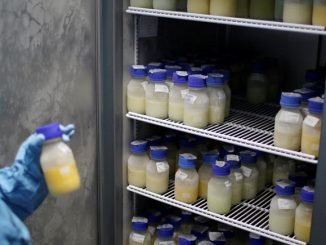
Kampala, Uganda | By Michael Wandati | According to the latest report from the World Health Organization (WHO), viral hepatitis ranks as the second leading infectious cause of death worldwide.
The WHO’s 2024 Global Hepatitis Report, reveals a concerning trend, showing an increase in fatalities caused by this infectious disease. In 2022, the death toll reached 1.3 million, up from 1.1 million in 2019.
Released during the World Hepatitis Summit, the research highlights a troubling stagnation in testing and treatment coverage rates. Despite advancements in diagnostic tools, treatment methods, and decreasing product costs, the report underscores the urgent need for improved efforts in testing and treatment to combat this deadly virus.
The WHO noted that, if quick action is done now, achieving the 2030 eradication target is still be possible.
The organization further noted that on a daily basis, 6,000 individuals contract viral hepatitis, with at least 3,500 succumbing to the illness within the same 24-hour timeframe.
Dr. Tedros Adhanom Ghebreyesus, WHO Director-General, underscored the paradoxical situation depicted by the report. Despite commendable global progress in infection prevention, the persistent toll of viral hepatitis presents a deeply concerning reality.
“Deaths are rising because far too few people with hepatitis are being diagnosed and treated. WHO is committed to supporting countries to use all the tools at their disposal,” Dr. Ghebreyesus said.
He urged more countries to increase up take and vaccinate infants for hepatitis B on time.
“We have powerful tools to prevent and diagnose and treat hepatitis; the challenge we face is to implement them at scale. Many of the barriers shared in this report can be overcome with improved policies, targeted interventions and concerted efforts of all stakeholders,” he said.
Although there has been a slight decrease in incidence estimates since 2019, the prevalence of viral hepatitis remains alarmingly high.
Also Read: World Hepatitis Day: “One life, One liver”
According to newly gathered data from 187 countries, there were 2.2 million reported new cases in 2022, down from 2.5 million in 2019. Among these, 1.2 million were hepatitis B infections and nearly 1 million were hepatitis C.
The WHO report highlights that in 2022, approximately 50 million individuals were living with hepatitis C, while another 254 million were affected by hepatitis B.
Individuals aged 30-54 bear half of the burden of chronic hepatitis B and C infections, with children under 18 accounting for 12% of cases. Notably, 58% of cases involve men.
Africa faces a significant challenge, accounting for 63% of new hepatitis infections, while only 18% of newborns on the continent receive the hepatitis B birth-dose vaccination.



